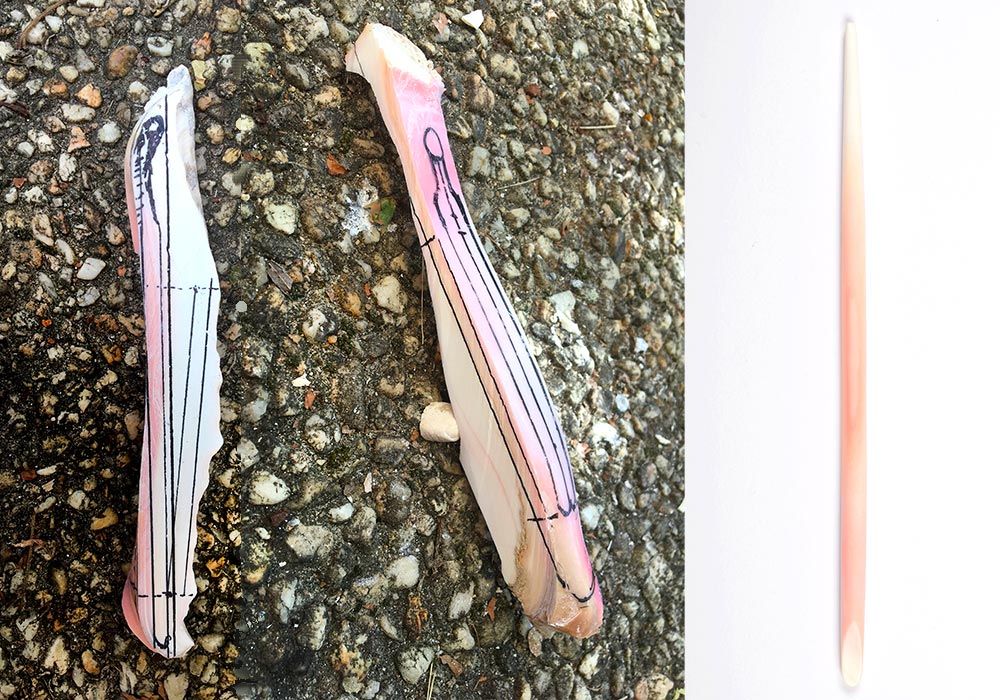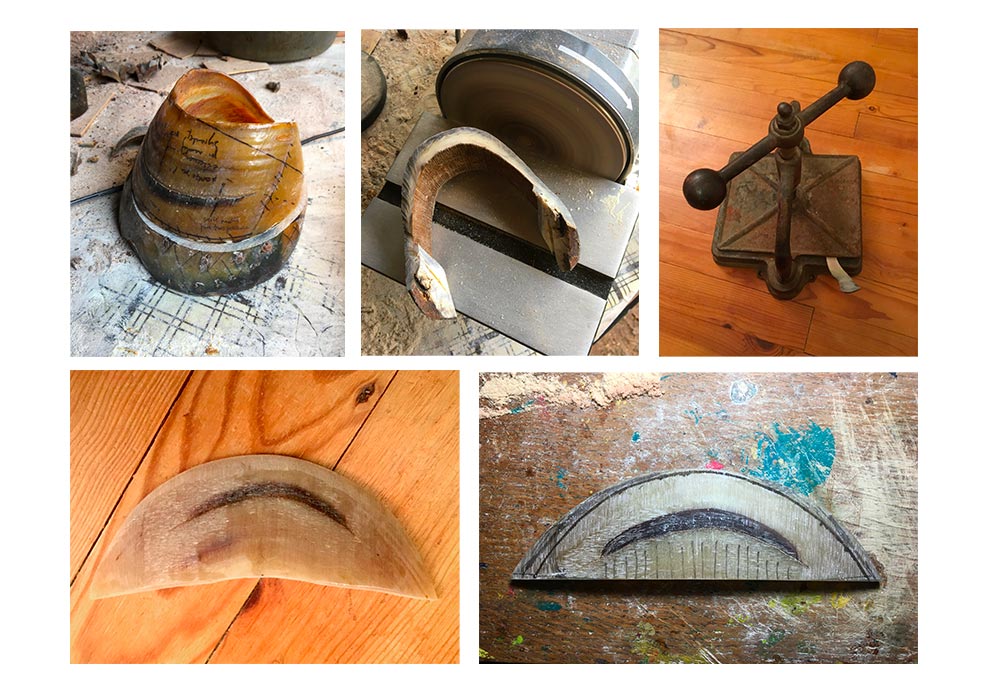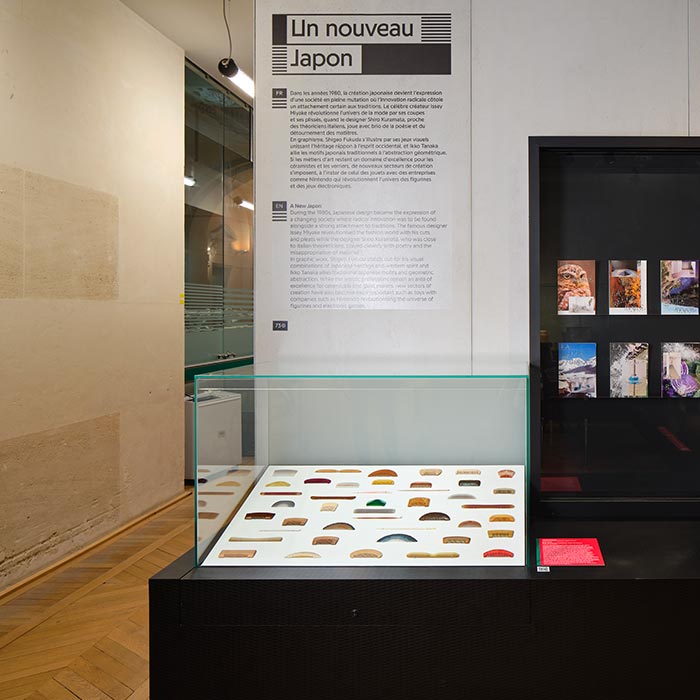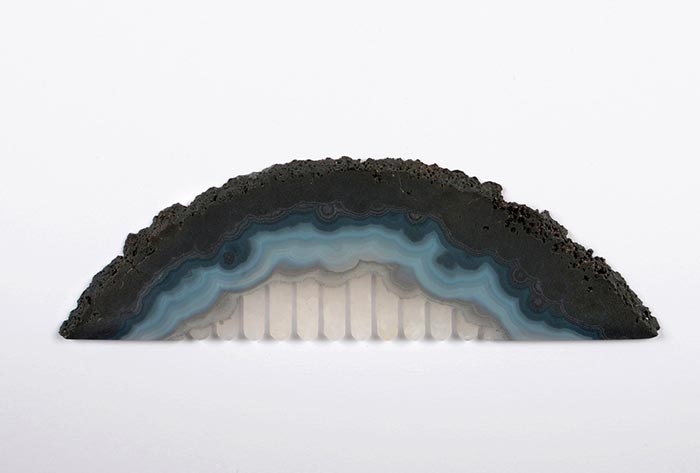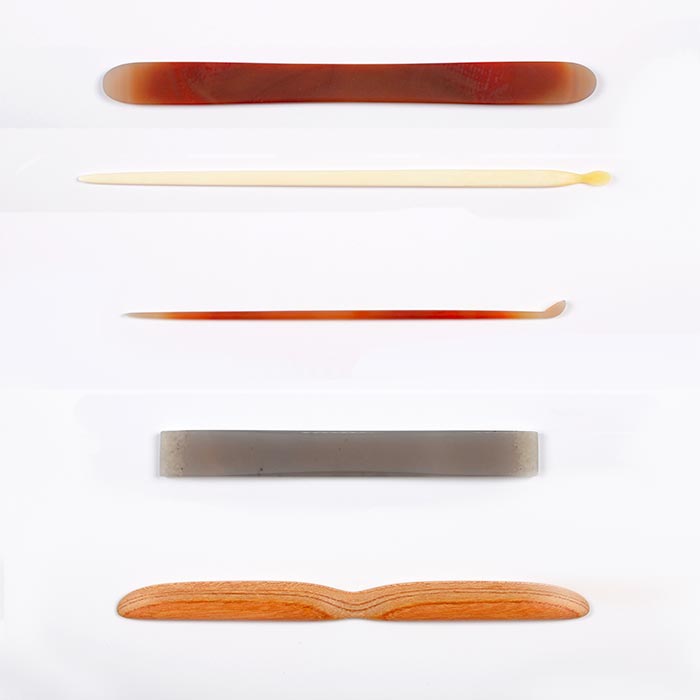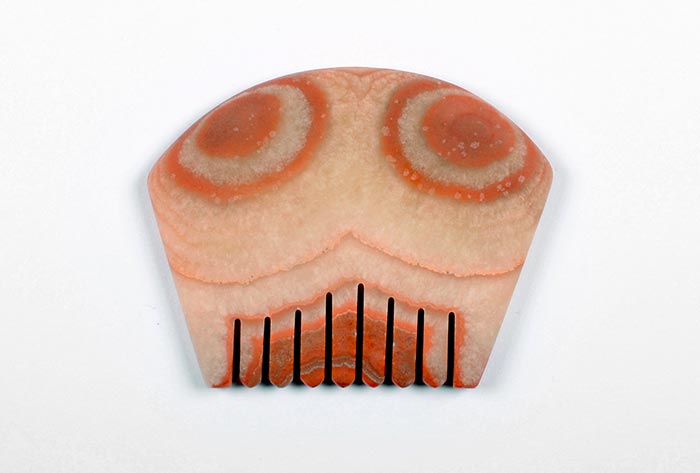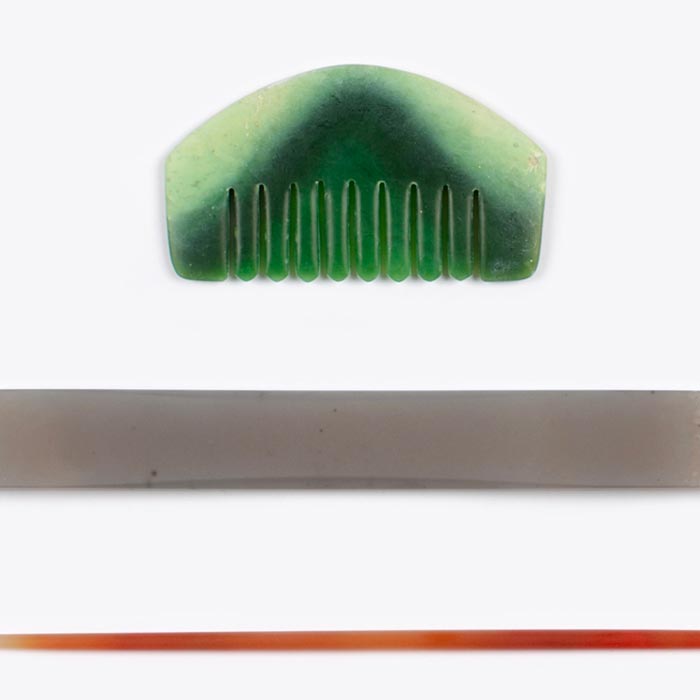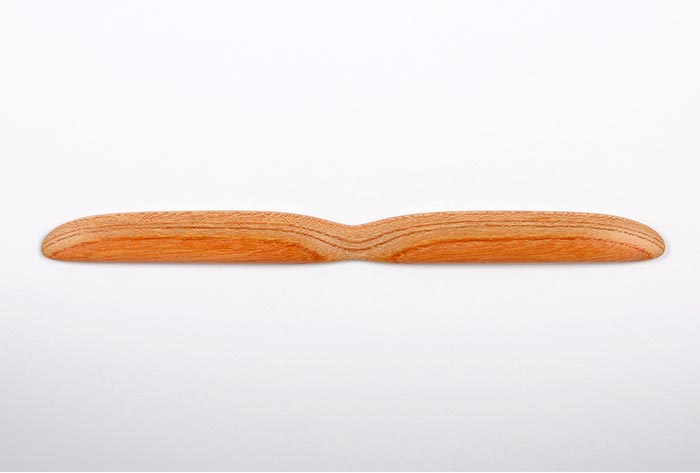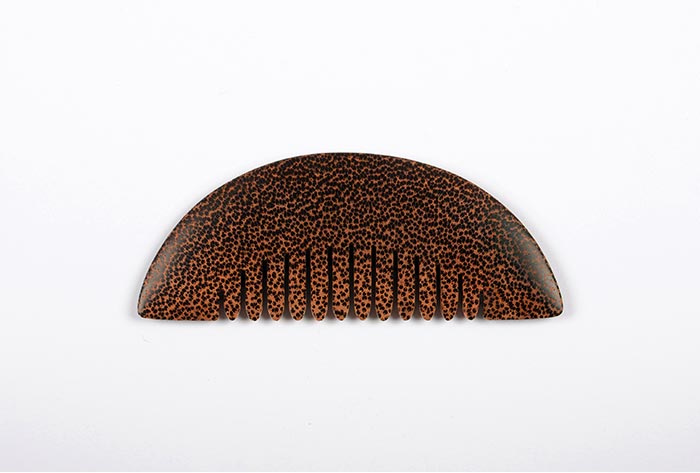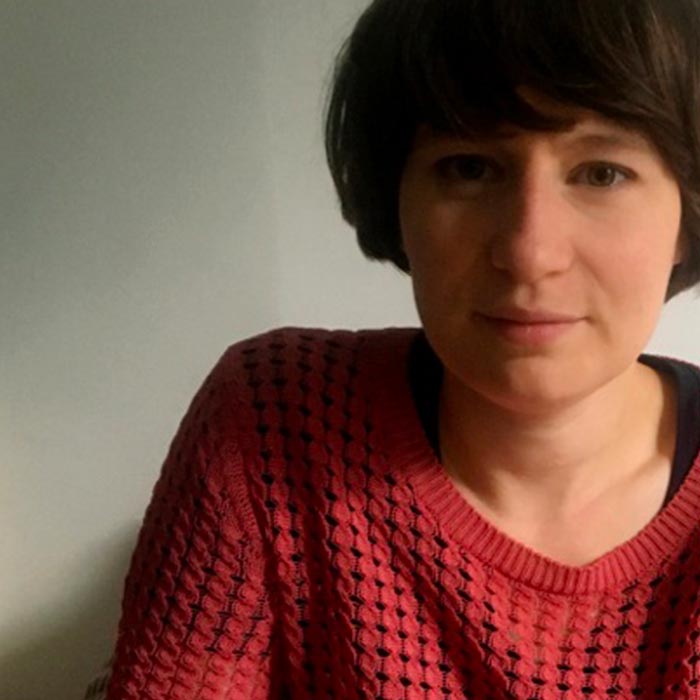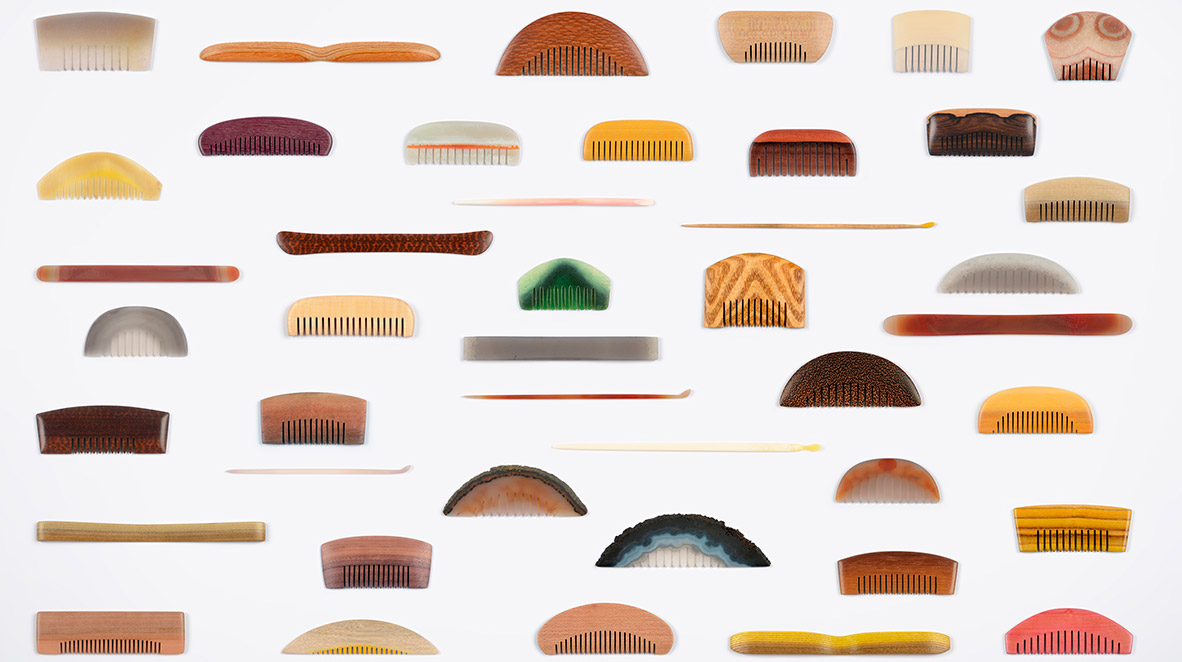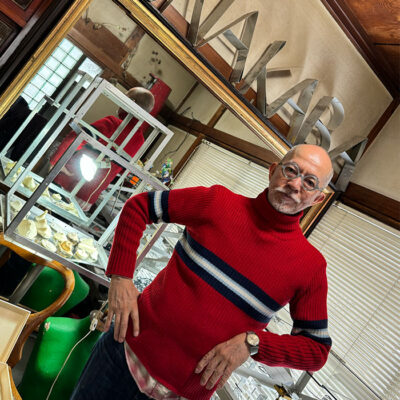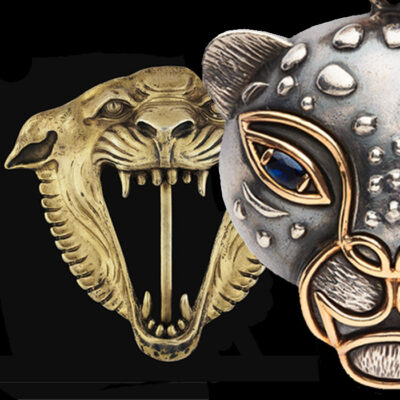Style
22 August 2021
Share
Marion Delarue: variations on kanzashi, kushi and kogai
The work of ultra-discreet French designer Marion Delarue is extremely rich, cultivated and creative. Her reinterpretations of Japanese hair accessories, known as kanzashis, exemplify this perfectly. Her collection of 43 pieces is on display until 3 October 2021 at the Musée des Arts Décoratifs in Paris.
By Sandrine Merle.
Much of Marion Delarue’s work revolves around hair ornaments, including kushis (combs), kogais (hairsticks with symmetrical ends) and kanzashis (spikes with asymmetrical ends) from the Edo period (1603 to 1868). “These ornaments were used to maintain increasingly sophisticated hairstyles,” explains Marion Delarue. At the time they were the only form of jewelry in Japanese culture – the kimono, which covered virtually the entire body, left very little room for rings, necklaces and bracelets. Traditionally horizontal and very flat (unlike their curved Western equivalents), these ornaments are made of a metal, ceramic, ivory, tortoise shell or wooden structure decorated with adornments such as lacquer and mother-of-pearl inlays, which sometimes spread out over the entire piece, completely covering the underlying material.
Contemporary kanzashis, kogais and kushis
A graduate in Contemporary Jewelry of the École Supérieure des Arts Décoratifs in Strasbourg, Marion Delarue respects the classical forms of the Japanese comb and spikes. She works on the material of the structure: by removing all decoration, she reveals its internal composition. She uses either traditional materials such as wood (excluding coral, tortoiseshell and ivory) – revealing veins, graphic patterns, and “pixelated”, striated or tiger-like textures – or newer alternatives such as agate, “an ideal material”, with its concentric stripes, layers of color, patterns evoking snowy peaks, birds in flight, etc. Her pieces in shades of white and pink are carved from a very thick dwarf shell that grows in water with a very low salt content, usually near the mouth of a river. And as if that were not exotic enough, she will soon be presenting pins made from the long dark grey bones of an Asian chicken or the pink-red bones of a pig fed on madder. She thus deftly removes the structure/ornament dichotomy: the material is both the base and the decoration.
The main threads of her work
Her first research dates back to 2019, during her 6-month residency at the Kujoyama Villa. “I went to the museum outside Tokyo, collected almost all the materials there and started the stone pieces, which are particularly complex to make.” That was the original source of all her inspiration and leitmotivs. Her fascination for Asia began with admiration of her grandmother’s collection of Asian objects. “She’d inherited them from her own grandfather. As I never went to museums, all the objets d’art I came across were Asian”, she laughs. She is also fascinated by hair ornaments, which are of crucial importance in Asia. Another key to reading her work is her passion for sophisticated techniques and rare skills, such as the one that consists of entirely unrolling a horse’s hoof to transform it into long translucent single-piece spikes. “For now, I unroll it enough to make just a comb, nothing more! And since no Japanese craftsman practices this technique anymore, I have to work it out for myself…”
Dry lacquering and feathering
Before this residency in Japan, Marion Delarue completed a similar stint at the Shangyuan Art Museum in Beijing that provides an opportunity to discover feather marquetry, followed by a spell at the Nam-Seoul University and the Pai-Chai University in South Korea. “It was a huge culture shock because the sheer richness of Korea exceeded all my expectations.” She also learned about ceramics that were associated with glass and then heated together: as they do not have the same melting point, the glass cracks, creating a surprising effect, reminiscent of agate. Then there was the Ottchil dry lacquer technique she was taught by an initially reluctant teacher who “believed that Westerners are too impatient”. For months, successive layers of lacquer had to be applied to a dried clay form, which was finally placed in water so that it disintegrated, leaving only the lacquer…
This apparently conceptual approach does not for a moment lose sight of its ultimate aesthetic goal. Marion Delarue’s art never gets lost in ideas – its true destination is beauty.
To see in the “An Uncertain Spring” exhibition until 3 October 2021 at the Musée des Arts décoratifs


